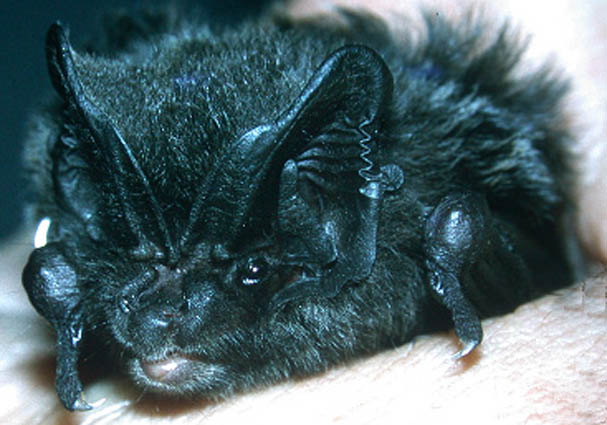Scientists have discovered a new species of leaf nosed bat in Vietnam, named Rhinolophus griffini, or Griffin's Leaf Nosed Bat.
 <- the nose leaf is a bit ugly, but its very useful for finding prey
<- the nose leaf is a bit ugly, but its very useful for finding preyLike others in Rhinolophidae it has leaf shaped nose projections to aid in echolocation. Now it was good timing that I found out about this new species today, as I've spent all afternoon writing up my physics coursework on how these features help with echolocation.
Turns out each nostril acts as a point source for sound waves, creating an interference pattern in the emitted waves. This is where waves that are in phase combine constructively and those out of phase combine destructively and cancel. This creates a pattern as shown below:

The effect of this is to narrow the beam of sound, and enable the bat to hunt better - like carrying a torch in the dark, the narrow beam of light is able to illuminate far more detail than a candle.
That being said, it appears having quiet echolocation calls can also be an advantage. The Barbastelle (Barbastella barbastellus), a British bat (yay!!), has very quiet whispering echolocation calls.
Some moths have evolved a mechanism of defence against bat echolocation calls, that is, they have ears which can hear the echolocation signals and allow the insect to escape. Some, such as the tiger moth, even emit jamming pulses.
However, the pulses emitted by the Barbastelle are too quiet to be picked up by the moth's ears (like a candle rather than a torch, harder to be detected), and so the bat can catch the moth! Awesome!
Although, this does mean that the bat limits its all round 'vision', it gives it a distinct advantage over the moths. And its unlikely the moths will evolve further, as if they could hear vibrations on the same scale as the Barbastelle's calls, sounds such as the rustling of leaves or the wind would be far too loud and unbearable.
As National Geographic put it: bats 1, moths 0.
 <- far cuter, IMO
<- far cuter, IMO
No comments:
Post a Comment